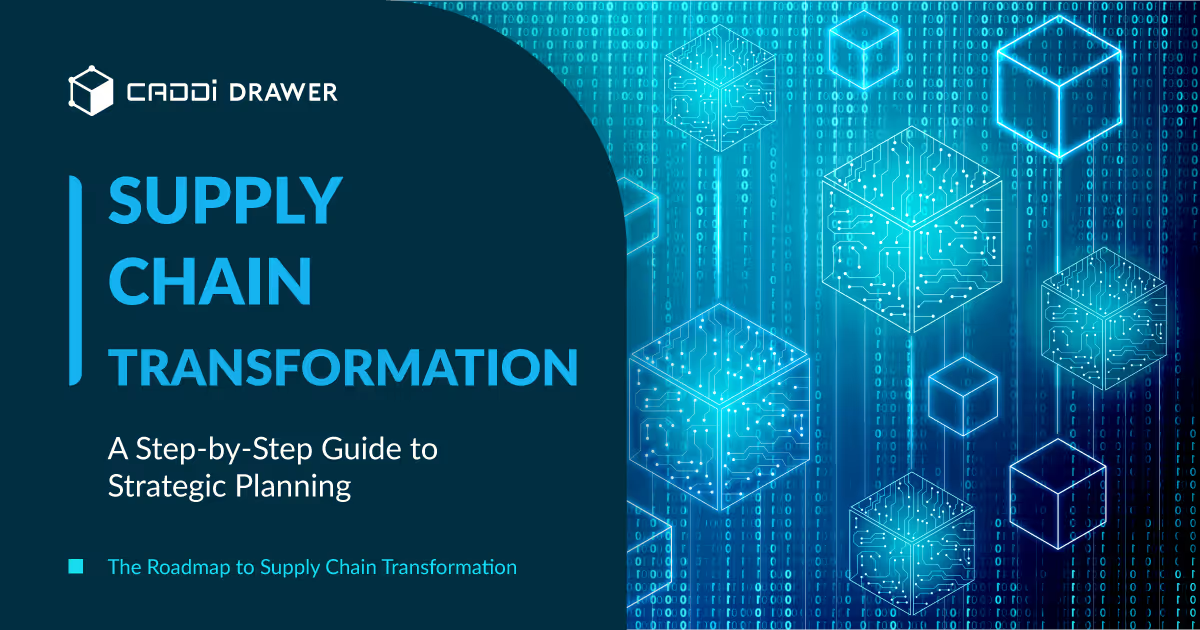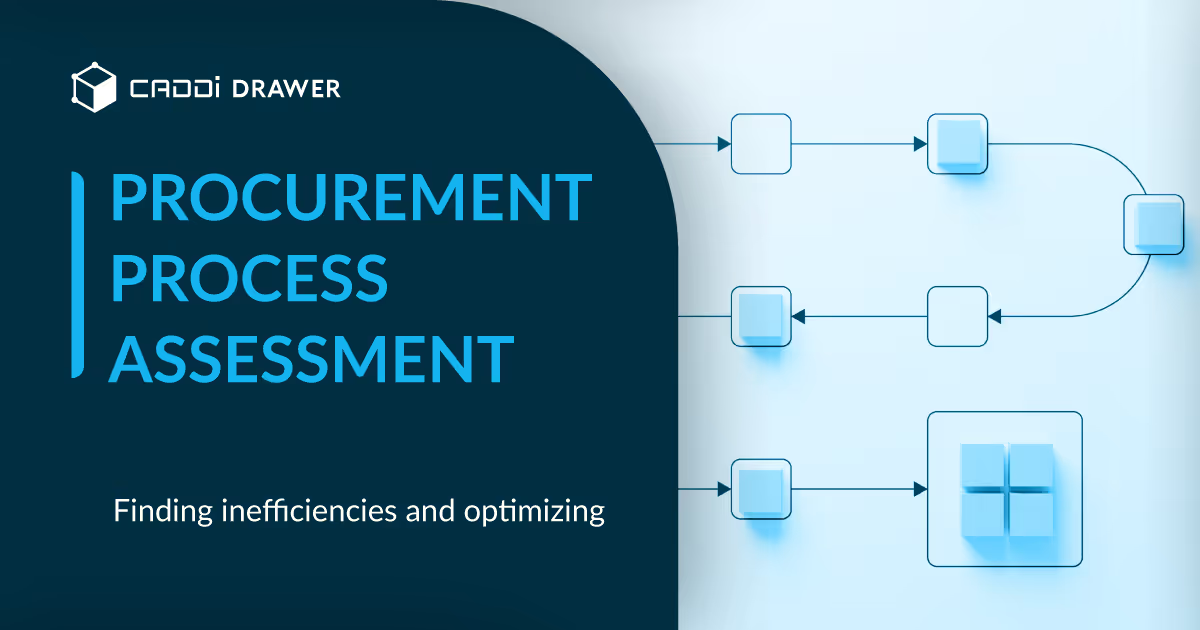Digital Procurement: A Successful Sourcing & Purchasing Strategy with It

Table of Contents

What is Digital Procurement?
Digital procurement is the use of digital technologies to streamline and automate the sourcing and purchasing of goods and services. It encompasses the entire procurement process, from identifying needs and researching suppliers to issuing purchase orders and tracking deliveries.
Think of it like an efficient digital assembly line for acquiring the components a manufacturing business needs. Just as a well-oiled machine keeps production humming along, digital procurement keeps operations running smoothly by ensuring the right parts and raw materials are sourced and delivered when needed.
Key aspects of digital procurement include:
- e-sourcing – Using digital tools to identify, evaluate and select suppliers
- e-procurement – Automating purchase requisitions, approvals and purchase orders
- Digital contract management – Managing supplier contracts and agreements electronically
- Spend analytics – Analyzing procurement data to optimize spending and identify savings opportunities
Digital procurement shouldn’t be confused with simple online ordering. It’s a comprehensive, systematic approach to managing procurement in the digital age. When implemented well, it enables tighter collaboration with suppliers, greater spend visibility, and improved risk management.
The power of digital procurement lies in replacing slow, error-prone manual processes with fast, data-driven workflows. As manufacturing becomes increasingly high-tech, digital procurement provides the agility and insights needed to stay competitive. Leveraging digital procurement is no longer optional – it’s a necessity for success in modern industry.
Challenges in Implementing Digital Procurement
While digital procurement offers significant benefits, implementing it successfully isn’t always a smooth journey. Here are some of the key challenges businesses face when embracing this digital transformation:
Integration Hurdles
One major roadblock is integrating new digital procurement systems with existing technologies. Many companies have a complex web of legacy systems, ERP platforms, and disparate databases. Getting these systems to play nicely with new procurement tools can be a daunting task. It’s like trying to fit a square peg into a round hole – it requires significant customization and IT expertise.
Data Quality and Availability Concerns
Poor data quality, inconsistent naming, and siloed databases hinder effectiveness. Searchability is key, as inaccessible data is of little use. Addressing these issues requires data governance, cleansing, and breaking down silos. Without a solid data foundation and availability, digital procurement falters, like navigating with a faulty compass and incomplete map.
Resistance to Change
Implementing digital procurement often requires a significant shift in processes and mindset. Employees may be resistant to change, preferring to stick with familiar manual methods. Overcoming this resistance requires strong change management and clear communication of the benefits. It’s not just about implementing new software – it’s about transforming the procurement culture.
Supplier Adoption
Digital procurement isn’t a solo endeavor. It requires buy-in and participation from suppliers. However, some suppliers, particularly smaller ones, may not have the technical capabilities or resources to fully engage with digital procurement platforms. This can lead to a digital divide and hinder the realization of end-to-end benefits.
Skill Gaps
Implementing and operating digital procurement systems requires a new set of skills. Procurement professionals need to be proficient in data analysis, digital tools, and strategic sourcing. Finding and retaining talent with this unique blend of skills can be challenging, especially in a competitive job market.
Navigating these challenges requires careful planning, clear leadership, and a willingness to invest in the necessary resources and capabilities. It’s not a quick fix, but rather a strategic journey towards a more agile, data-driven procurement function.
Solutions to Digital Procurement Challenges
While the challenges of implementing digital procurement are significant, they are not insurmountable. Here are some key strategies and tools that can help companies overcome these hurdles and realize the full potential of digital procurement.
Integrated Data Management
One fundamental solution to digital procurement challenges is implementing an integrated data management strategy. This involves breaking down data silos and creating a single, unified view of procurement data across the organization. By integrating data from multiple sources, such as ERP systems, supplier portals, and spend analysis tools, companies can gain a more comprehensive and accurate picture of their procurement activities.
Tools like Informatica and Talend provide powerful data integration capabilities, allowing companies to connect and harmonize data from disparate systems. Master Data Management (MDM) solutions, such as Stibo Systems and Reltio, can help create a single, trusted source of supplier and product data. This integrated data foundation enables more informed decision-making, improved spend visibility, and enhanced supplier collaboration.
Phased Implementation Approach
One way to mitigate integration challenges is to adopt a phased approach to implementation. Rather than trying to overhaul the entire procurement system at once, companies can start with a specific category or business unit. This allows for incremental changes and learnings that can be applied to subsequent phases. It’s like building a puzzle one piece at a time, rather than trying to fit everything together at once.
Data Governance and Cleansing
To address data quality concerns, companies need to invest in robust data governance and cleansing processes. This involves establishing clear data standards, implementing data validation checks, and regularly auditing and updating procurement data. Tools like Tamr and Trifacta can help automate data cleansing and harmonization tasks. It’s like giving your procurement data a regular health check-up to ensure it stays fit and reliable.
Change Management and Training
Overcoming resistance to change requires a comprehensive change management plan. This should include clear communication of the benefits, extensive training on new systems and processes, and ongoing support. Platforms like WalkMe and Whatfix provide interactive guidance and training within procurement applications. It’s about making the change journey engaging and rewarding for all involved.
Supplier Enablement Programs
To bring suppliers along the digital procurement journey, companies can implement supplier enablement programs. This can involve providing training and resources to help suppliers adopt digital tools, as well as offering incentives for participation. Supplier networks like Ariba Network and SupplyOn provide a platform for buyers and suppliers to collaborate digitally. It’s about extending a helping hand to suppliers and creating a win-win digital ecosystem.
Talent Development and Acquisition
Bridging the digital procurement skills gap requires a two-pronged approach of upskilling existing staff and attracting new talent. Companies can partner with universities and professional associations to develop tailored training programs. Internally, rotational programs and cross-functional projects can help procurement staff gain exposure to digital tools and analytics. To attract digital natives, companies need to highlight the strategic and innovative aspects of modern procurement roles.
Building the Business Case
To secure budget for digital procurement initiatives, procurement leaders need to build a compelling business case. This should quantify the potential cost savings, process efficiencies, and competitive advantages. Interactive ROI calculators and case studies can help bring the numbers to life. Partnering with finance and IT can help align procurement initiatives with broader corporate goals. It’s about painting a picture of the future that is too attractive to resist.
Leveraging Specialized Tools
There are a range of specialized tools that can accelerate digital procurement transformation. For example:
- Sievo and LevaData provide AI-powered spend analysis and market intelligence
- Icertis and Coupa offer cloud-based contract management and source-to-pay solutions
- Celonis and Signavio provide process mining tools to identify procurement bottlenecks and inefficiencies
- CADDi Drawer streamlines data management and enhances procurement intelligence by enabling instant reference to past drawings and order history data
Success Cases of Digital Procurement
Vodafone’s digital transformation
One notable success story is Vodafone’s digital transformation of its global procurement process. With 23 operating companies worldwide, Vodafone’s procurement unit handles around 800,000 purchase orders and 5 million invoices annually. However, tracking and analyzing procurement effectiveness was a time-consuming and error-prone manual process.
To address this, Vodafone built a supply-chain-analytics control center powered by data visualization, AI, RPA, and machine learning. The platform analyzes 20 terabytes of data, providing near real-time visibility into procurement metrics. This transformation allowed Vodafone to:
- Increase perfect purchase order rate from 73% to 96%
- Reduce cost per purchase order from €2.7 to €2.36
- Identify bottlenecks, reducing time to market by 20% and procurement costs by 11%
The granular data visibility and single source of truth across all countries enabled standardization, automation, and continuous improvement. Vodafone’s success demonstrates the power of combining multiple digital technologies to streamline and optimize procurement on a global scale.
Kawasaki Railcar’s procurement optimization
Another success story is Kawasaki Railcar’s implementation of CADDi Drawer, a cloud-based drawing search software, to address challenges in accessing past drawings and order information.
By automatically linking order data to drawings, CADDi Drawer enables instant reference to similar past projects, empowering procurement teams to select optimal suppliers and streamline processes.
As Kawasaki Railcar expands CADDi Drawer’s application across overseas projects, the company anticipates significant improvements in design and procurement operations.
What is Digital Procurement?
Digital procurement is the use of digital technologies to streamline and automate the sourcing and purchasing of goods and services. It encompasses the entire procurement process, from identifying needs and researching suppliers to issuing purchase orders and tracking deliveries.
Think of it like an efficient digital assembly line for acquiring the components a manufacturing business needs. Just as a well-oiled machine keeps production humming along, digital procurement keeps operations running smoothly by ensuring the right parts and raw materials are sourced and delivered when needed.
Key aspects of digital procurement include:
- e-sourcing – Using digital tools to identify, evaluate and select suppliers
- e-procurement – Automating purchase requisitions, approvals and purchase orders
- Digital contract management – Managing supplier contracts and agreements electronically
- Spend analytics – Analyzing procurement data to optimize spending and identify savings opportunities
Digital procurement shouldn’t be confused with simple online ordering. It’s a comprehensive, systematic approach to managing procurement in the digital age. When implemented well, it enables tighter collaboration with suppliers, greater spend visibility, and improved risk management.
The power of digital procurement lies in replacing slow, error-prone manual processes with fast, data-driven workflows. As manufacturing becomes increasingly high-tech, digital procurement provides the agility and insights needed to stay competitive. Leveraging digital procurement is no longer optional – it’s a necessity for success in modern industry.
Challenges in Implementing Digital Procurement
While digital procurement offers significant benefits, implementing it successfully isn’t always a smooth journey. Here are some of the key challenges businesses face when embracing this digital transformation:
Integration Hurdles
One major roadblock is integrating new digital procurement systems with existing technologies. Many companies have a complex web of legacy systems, ERP platforms, and disparate databases. Getting these systems to play nicely with new procurement tools can be a daunting task. It’s like trying to fit a square peg into a round hole – it requires significant customization and IT expertise.
Data Quality and Availability Concerns
Poor data quality, inconsistent naming, and siloed databases hinder effectiveness. Searchability is key, as inaccessible data is of little use. Addressing these issues requires data governance, cleansing, and breaking down silos. Without a solid data foundation and availability, digital procurement falters, like navigating with a faulty compass and incomplete map.
Resistance to Change
Implementing digital procurement often requires a significant shift in processes and mindset. Employees may be resistant to change, preferring to stick with familiar manual methods. Overcoming this resistance requires strong change management and clear communication of the benefits. It’s not just about implementing new software – it’s about transforming the procurement culture.
Supplier Adoption
Digital procurement isn’t a solo endeavor. It requires buy-in and participation from suppliers. However, some suppliers, particularly smaller ones, may not have the technical capabilities or resources to fully engage with digital procurement platforms. This can lead to a digital divide and hinder the realization of end-to-end benefits.
Skill Gaps
Implementing and operating digital procurement systems requires a new set of skills. Procurement professionals need to be proficient in data analysis, digital tools, and strategic sourcing. Finding and retaining talent with this unique blend of skills can be challenging, especially in a competitive job market.
Navigating these challenges requires careful planning, clear leadership, and a willingness to invest in the necessary resources and capabilities. It’s not a quick fix, but rather a strategic journey towards a more agile, data-driven procurement function.
Solutions to Digital Procurement Challenges
While the challenges of implementing digital procurement are significant, they are not insurmountable. Here are some key strategies and tools that can help companies overcome these hurdles and realize the full potential of digital procurement.
Integrated Data Management
One fundamental solution to digital procurement challenges is implementing an integrated data management strategy. This involves breaking down data silos and creating a single, unified view of procurement data across the organization. By integrating data from multiple sources, such as ERP systems, supplier portals, and spend analysis tools, companies can gain a more comprehensive and accurate picture of their procurement activities.
Tools like Informatica and Talend provide powerful data integration capabilities, allowing companies to connect and harmonize data from disparate systems. Master Data Management (MDM) solutions, such as Stibo Systems and Reltio, can help create a single, trusted source of supplier and product data. This integrated data foundation enables more informed decision-making, improved spend visibility, and enhanced supplier collaboration.
Phased Implementation Approach
One way to mitigate integration challenges is to adopt a phased approach to implementation. Rather than trying to overhaul the entire procurement system at once, companies can start with a specific category or business unit. This allows for incremental changes and learnings that can be applied to subsequent phases. It’s like building a puzzle one piece at a time, rather than trying to fit everything together at once.
Data Governance and Cleansing
To address data quality concerns, companies need to invest in robust data governance and cleansing processes. This involves establishing clear data standards, implementing data validation checks, and regularly auditing and updating procurement data. Tools like Tamr and Trifacta can help automate data cleansing and harmonization tasks. It’s like giving your procurement data a regular health check-up to ensure it stays fit and reliable.
Change Management and Training
Overcoming resistance to change requires a comprehensive change management plan. This should include clear communication of the benefits, extensive training on new systems and processes, and ongoing support. Platforms like WalkMe and Whatfix provide interactive guidance and training within procurement applications. It’s about making the change journey engaging and rewarding for all involved.
Supplier Enablement Programs
To bring suppliers along the digital procurement journey, companies can implement supplier enablement programs. This can involve providing training and resources to help suppliers adopt digital tools, as well as offering incentives for participation. Supplier networks like Ariba Network and SupplyOn provide a platform for buyers and suppliers to collaborate digitally. It’s about extending a helping hand to suppliers and creating a win-win digital ecosystem.
Talent Development and Acquisition
Bridging the digital procurement skills gap requires a two-pronged approach of upskilling existing staff and attracting new talent. Companies can partner with universities and professional associations to develop tailored training programs. Internally, rotational programs and cross-functional projects can help procurement staff gain exposure to digital tools and analytics. To attract digital natives, companies need to highlight the strategic and innovative aspects of modern procurement roles.
Building the Business Case
To secure budget for digital procurement initiatives, procurement leaders need to build a compelling business case. This should quantify the potential cost savings, process efficiencies, and competitive advantages. Interactive ROI calculators and case studies can help bring the numbers to life. Partnering with finance and IT can help align procurement initiatives with broader corporate goals. It’s about painting a picture of the future that is too attractive to resist.
Leveraging Specialized Tools
There are a range of specialized tools that can accelerate digital procurement transformation. For example:
- Sievo and LevaData provide AI-powered spend analysis and market intelligence
- Icertis and Coupa offer cloud-based contract management and source-to-pay solutions
- Celonis and Signavio provide process mining tools to identify procurement bottlenecks and inefficiencies
- CADDi Drawer streamlines data management and enhances procurement intelligence by enabling instant reference to past drawings and order history data
Success Cases of Digital Procurement
Vodafone’s digital transformation
One notable success story is Vodafone’s digital transformation of its global procurement process. With 23 operating companies worldwide, Vodafone’s procurement unit handles around 800,000 purchase orders and 5 million invoices annually. However, tracking and analyzing procurement effectiveness was a time-consuming and error-prone manual process.
To address this, Vodafone built a supply-chain-analytics control center powered by data visualization, AI, RPA, and machine learning. The platform analyzes 20 terabytes of data, providing near real-time visibility into procurement metrics. This transformation allowed Vodafone to:
- Increase perfect purchase order rate from 73% to 96%
- Reduce cost per purchase order from €2.7 to €2.36
- Identify bottlenecks, reducing time to market by 20% and procurement costs by 11%
The granular data visibility and single source of truth across all countries enabled standardization, automation, and continuous improvement. Vodafone’s success demonstrates the power of combining multiple digital technologies to streamline and optimize procurement on a global scale.
Kawasaki Railcar’s procurement optimization
Another success story is Kawasaki Railcar’s implementation of CADDi Drawer, a cloud-based drawing search software, to address challenges in accessing past drawings and order information.
By automatically linking order data to drawings, CADDi Drawer enables instant reference to similar past projects, empowering procurement teams to select optimal suppliers and streamline processes.
As Kawasaki Railcar expands CADDi Drawer’s application across overseas projects, the company anticipates significant improvements in design and procurement operations.
Ready to see CADDi Drawer in action? Get a personalized demo.
Subscribe to our Blog!
Related Resources












.svg)



.svg)
.svg)
.svg)


